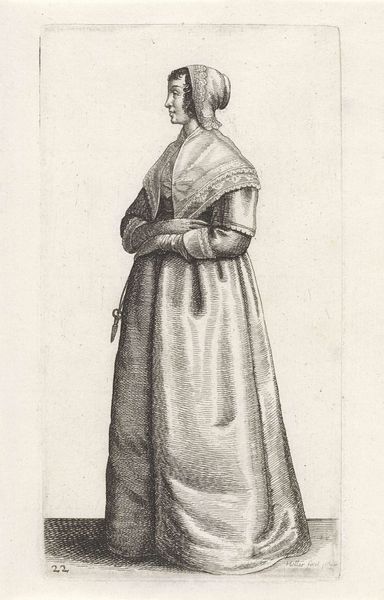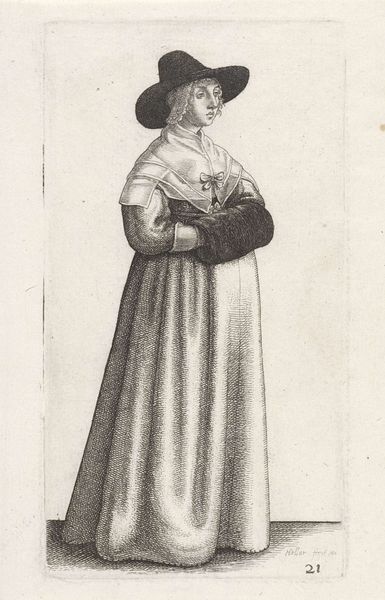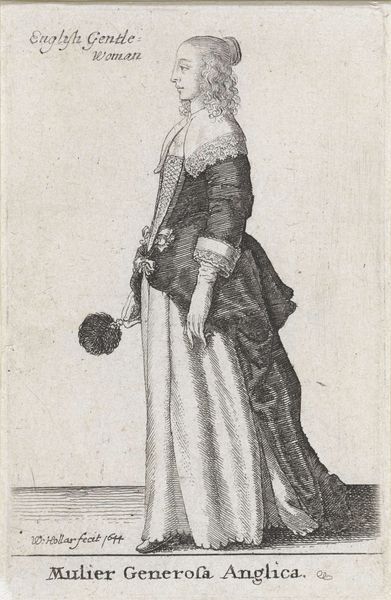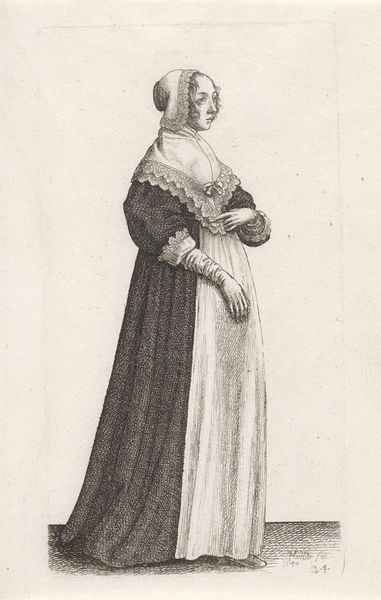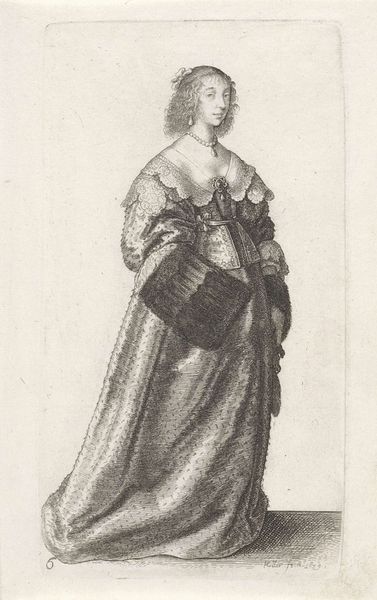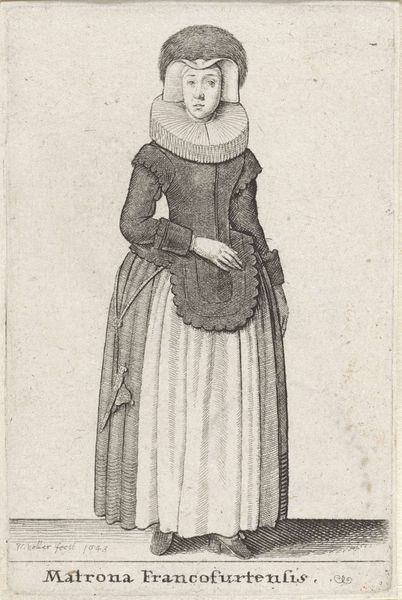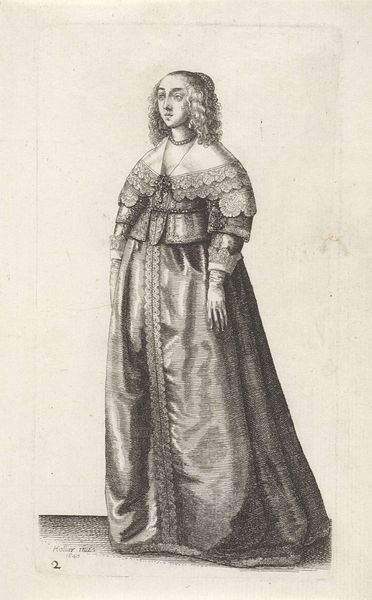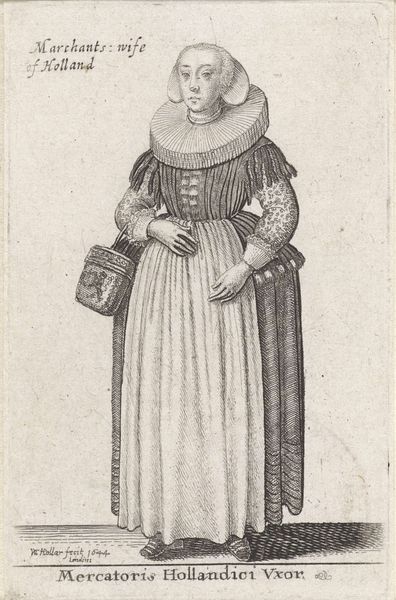
print, engraving
#
portrait
#
medieval
# print
#
old engraving style
#
history-painting
#
engraving
#
realism
Dimensions: height 90 mm, width 58 mm
Copyright: Rijks Museum: Open Domain
Editor: So, this is "Ciuis Londinensis Filia / Cittiznes daugter" made in 1643 by Wenceslaus Hollar. It's an engraving. She seems...reserved. Austere, almost. What do you see in this piece? Curator: I see a potent representation of class and gender in 17th century London. Hollar's precise lines don't just depict a woman; they signify a specific societal role. What do you notice about her attire? How does it speak to her position within the burgeoning merchant class of London at this time? Editor: Her clothes seem very plain, but high quality, perhaps? It is interesting that the title references "citizens". Curator: Precisely! This is not nobility. The “citizen’s daughter” signifies a rising merchant class, empowered yet restricted. Consider the sociopolitical context: London was exploding commercially. This woman embodies that shift, yet remains firmly within patriarchal constraints. How does her posture reflect this tension? Editor: I see what you mean, now that you mention it. She is reserved, composed but also constrained. Almost like a doll? Is she allowed to develop herself freely or is she on display as an achievement of her father? Curator: Exactly! And Hollar captures it with incredible detail. Each fold in her dress, the way she holds her hands, it all speaks to the limited agency afforded to women, even those of privilege, in that era. What can art tell us about that position? Editor: It gives such an insight into the role of women! I would not have seen so many issues in this depiction of a wealthy, English lady, if you had not made me question her limited agency. Thank you! Curator: And thank you for seeing the importance of class and gender representation! Every artistic choice—or perceived lack thereof— is an implicit social commentary. I hope more art can be read like this.
Comments
No comments
Be the first to comment and join the conversation on the ultimate creative platform.



